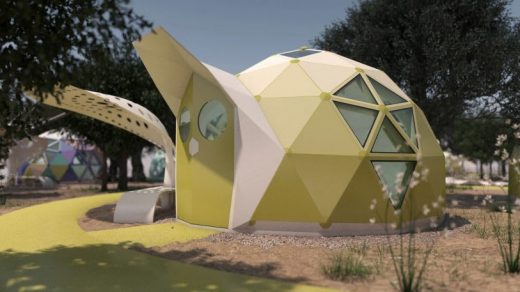Zappos wants to help build a geodesic dome city for Las Vegas’s homeless residents
In November, the city of Las Vegas passed a law making it illegal for people to camp, lie down, or sleep on the city’s streets. Targeting the city’s homeless population, which has been estimated at more than 14,000 people, the law could make sleeping outside punishable by up to six months in jail.
Geoship, a company that is prototyping geodesic home houses, had already been well at work on a project that would provide homes for those without even before the law passed. For more than a year, Geoship CEO Morgan Bierschenk and his partners had been touring transitional villages (where people experiencing homelessness could live temporarily before finding a more permanent situation) built in the Portland, Oregon, for inspiration on how to set up his own village featuring the startup’s dome-shaped shelters. Then Clark County, which encompasses Las Vegas, issued a request for proposals for emergency shelter solutions to house the people who were no longer allowed to sleep on the street. Bierschenk responded.

[Image: courtesy Geoship]
The result was a proposal for Geoship’s Homes for the Domeless project, a cooperative living initiative that will include both affordable housing and transitional living villages for people with low income or experiencing homelessness in and around Las Vegas. The villages will consist of the geodesic domes Geoship has been perfecting, using a special chemically bonded ceramic composite. The aim is to get the first couple of domes installed by March or April and break ground on the first village (which will consist of permanent affordable housing) by the end of summer 2020.
Most immediately, the goal of the project is to create housing opportunities for those experiencing homelessness. Each village will accommodate between 40 and 60 residents, with domes ranging from 200 square feet to 1,400 square feet. The temporary residents that do end up there will get a place to sleep and ways to participate in a small, communal society, allowing them to develop skills and habits that could help them move toward a more permanent living situation. Though Bierschenk says the villages will “require a mix of people with different levels of ability and need,” so far there is no designated process for how to choose who will get to live in the transitional villages.
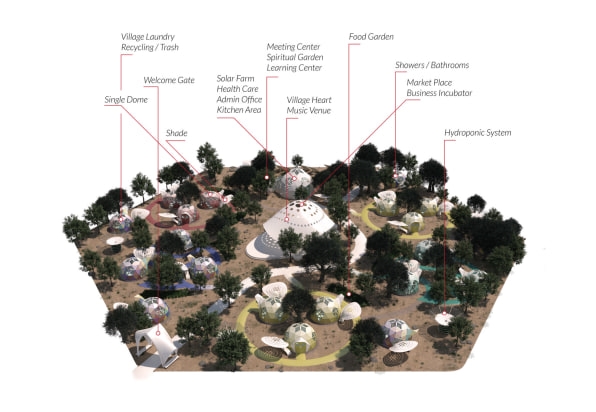
[Image: courtesy Geoship]
One of the project’s biggest partners is Las Vegas-based shoe company Zappos. In a statement, a Zappos spokesperson called the company a “community sponsor” of Geoship. The first prototype domes to go up in March or April will sit near Zappos’s campus in downtown Las Vegas.
In the completed transitional villages, one or two people will live in each 200- square-foot dome. Long-term and permanent residents (there will be some permanent residents in the transitional villages) will get their own domes. Families can live across multiple, connected structures.
Geoship’s domes are meant to withstand environmental challenges. The ceramic is fireproof, and the company says it reflects more than 80% of the sun’s heat, naturally cooling the interior. The material also stands up well to water, mold, and insects. Las Vegas is an ideal place to pilot a dome village because not only is there a need for housing, but there’s also the main, raw ingredients present needed to make the dome’s ceramic material. These include salt water from nearby desalination plants and wastewater from water treatment plants.
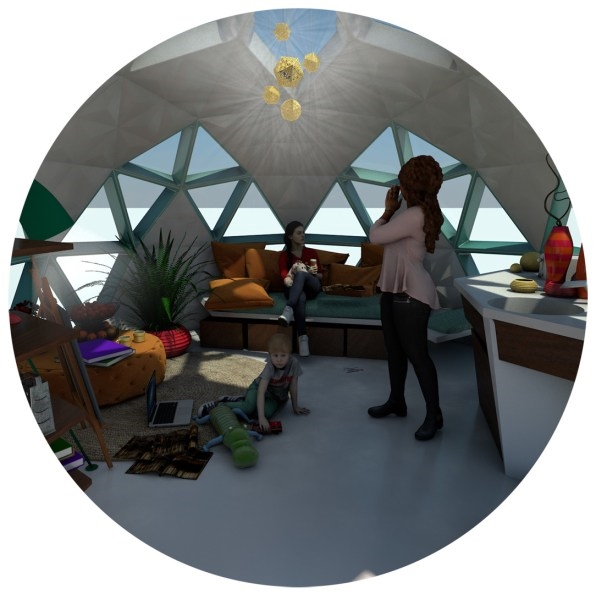
So far, seed funding for the project is coming from private investors, says Bierschenk, “and hopefully Clark County,” though the government has yet to commit to giving land to the project. Since the affordable housing village will be built first, homes purchased there—at $30,000 for a 200-square-foot dome—will help fund additional building costs; Geoship will donate two dwellings to the transitional village for every three sold in the affordable housing village. The short-term housing will otherwise be available for as little as $9 per month.
In addition to Zappos, Geoship has partnered with the The City Repair Project, the Buckminster Fuller Institute, and several other groups on this initiative. The ultimate goal is to establish transitional, geodesic villages outside multiple major cities in the U.S. “They’ll make it possible for people to have a place to fall when they need to,” Bierschenk says.
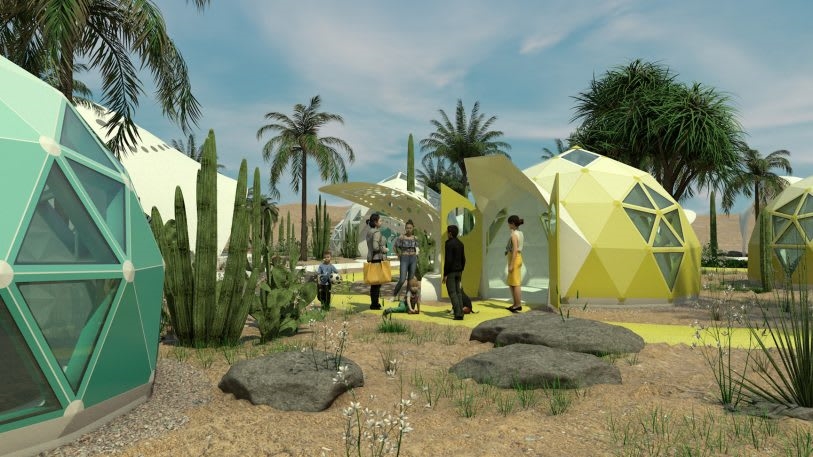
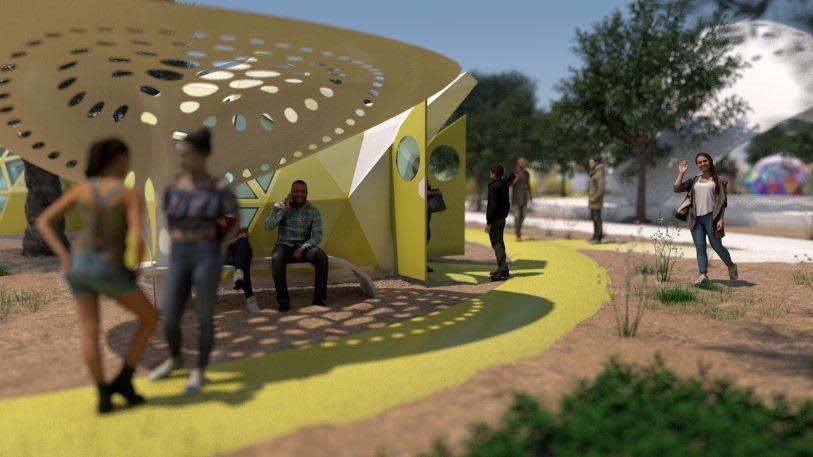
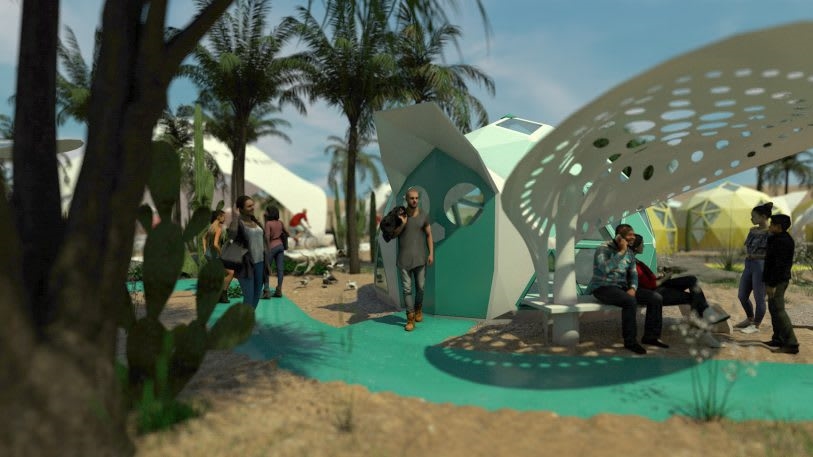
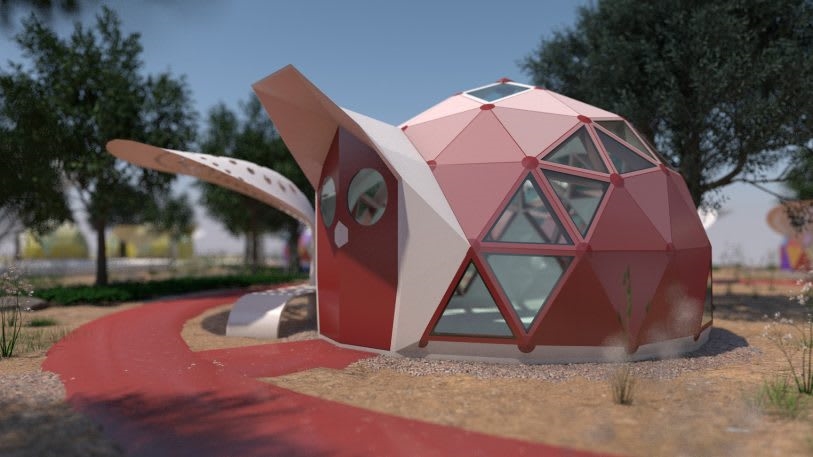
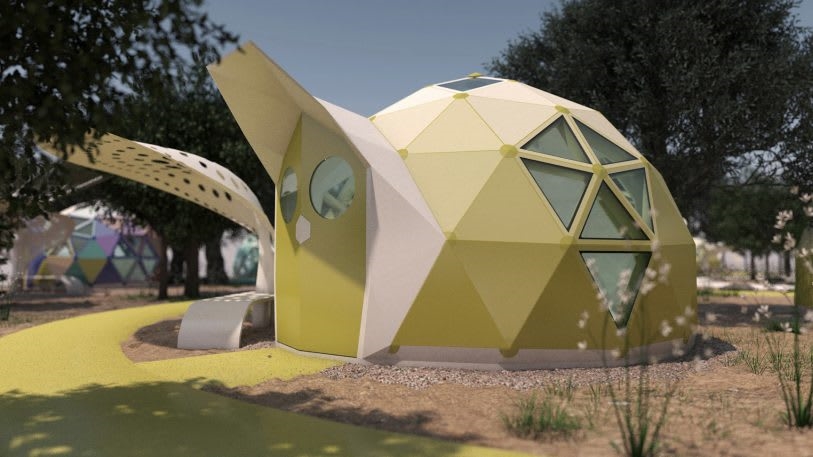
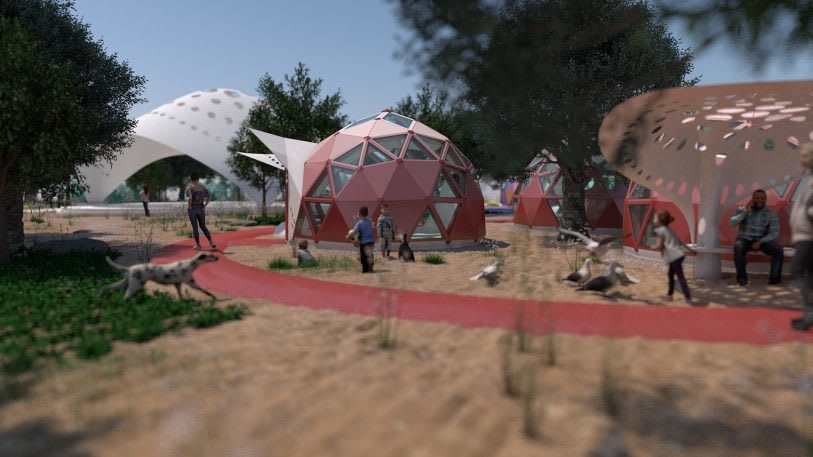
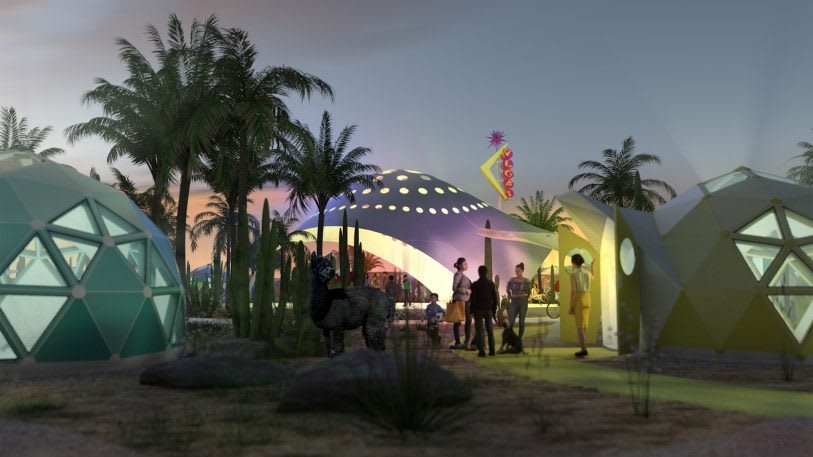
Fast Company , Read Full Story
(43)

